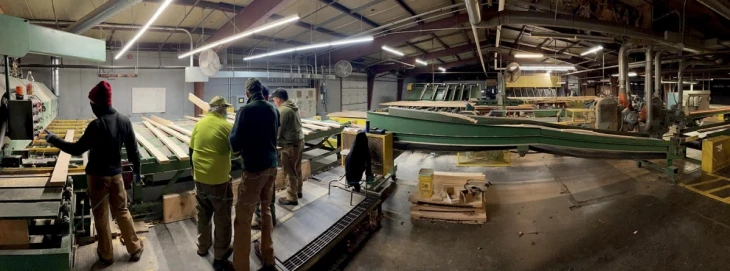A Novel Use for Eastern Hemlock

Most days, Jesup Memorial Library Director Matt DeLaney toils in a tiny Harry Potter-esque office tucked beneath the stairs leading to the 114-year-old building’s second-floor balcony. The space is too tight for meetings, and it’s not clear whether the standing desk reflects his personal preference or is just a practical accommodation.
But on this particular day in late October 2024, as Bar Harbor, Maine’s fall foliage tourist season draws to a close, DeLaney dons a hard hat and stands outside the building as a small fleet of flatbed trucks negotiates the final street corner before entering the library’s parking lot. In a few minutes, workers will begin offloading cross-laminated timber (CLT) panels of eastern hemlock for a $9.1 million, three-story, 12,000-square-foot addition that will double the library’s original size.
Mass timber as a construction material is not new. An article from the Forest History Society dates the first architectural use of glulam in the United States to 1934, when architect and engineer Max Hanisch, an immigrant from Germany, incorporated glulam arches into his design for a gym in Peshtigo, Wisconsin. According to Peggi Clouston, a professor in the Department of Environmental Conservation at University of Massachusetts Amherst, glulam usage appeared in local building codes as early as the 1940s. “But cross-laminated timber, which is the buzzword these days, only came out of Europe – Germany, Switzerland, Austria – about 30 years ago,” she said.
Published in Northern Woodlands on December 21, 2024


